Ration Card
In India, a Ration Card is a crucial document for individuals living below the poverty line. State governments issue ration cards to families so they can get food at lower prices from government-subsidized shops every month under the National Food Security Act.
The ration card system is managed by the Department of Food and Public Distribution.
On this page, you will find information about Ration Cards, including the registration process, how to download, eligibility criteria, and checking the list of ration cards.
Ration Card List 2024
To check your area's List online, just follow these steps:
- Visit your state's Food and Supply Department website.
If you're in Uttar Pradesh, for example, go to their site at - fcs.up.gov.in. And click on the 'राशन कार्ड की पात्रता सूची' option on the homepage.
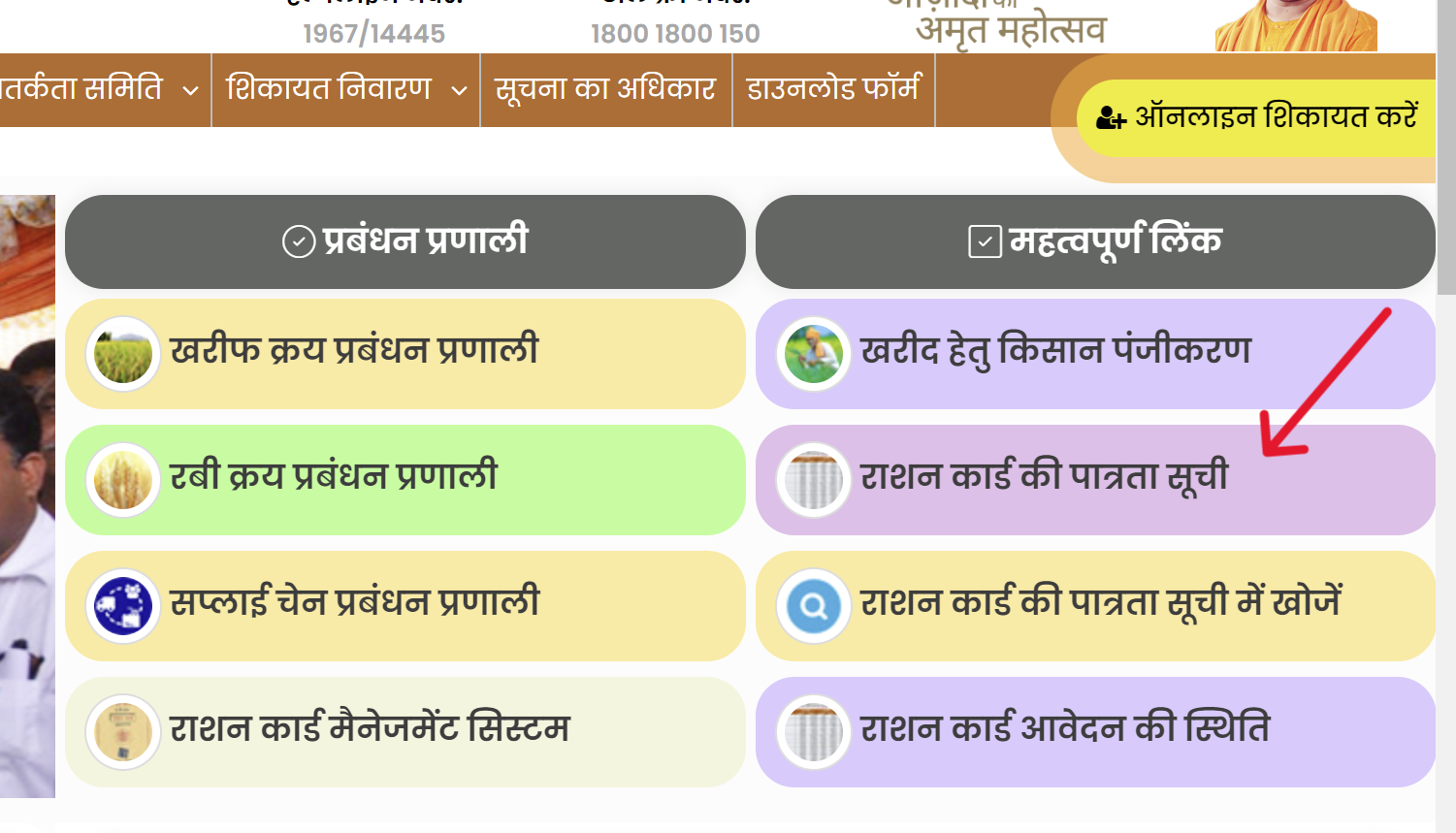
- Pick your district and town or village.
On the new page, select your district. Then, pick either urban or rural and click on your town or village.
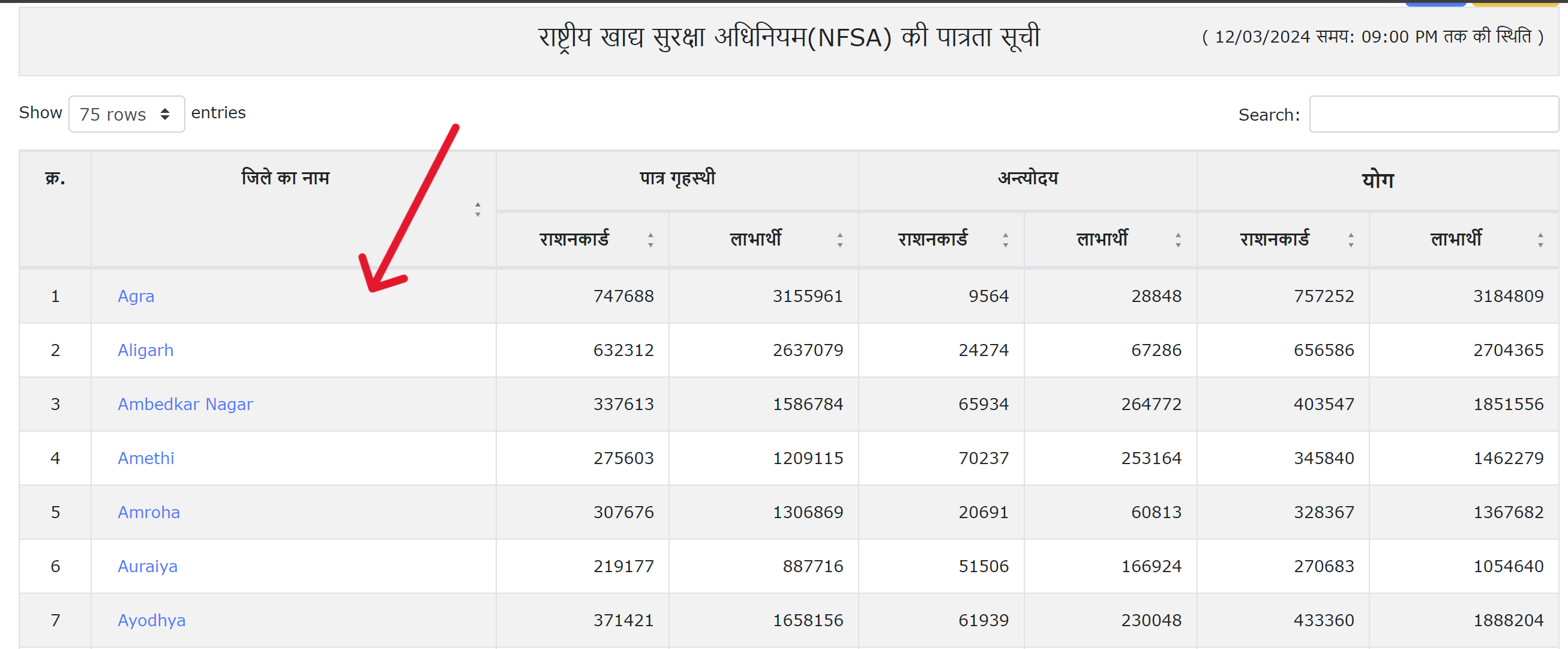
- Look for your ration shopkeeper's name.
You'll see a list of FPS/PDS shopkeepers. Next to each name, there are a number of ration cards they handle.

- Click on the ration card number and see the Ration Card list.
Select your shopkeeper and click on the number next to their name, you'll see a list of all the ration cards managed by that shopkeeper.
Ration Card List (State-Wise)
You can check your list by selecting your state from the links provided below.
Download
You can now download your ration card online and use it just like the original one. This online version is called an e-Ration Card.
- Go to DigiLocker at www.digilocker.gov.in.
- Sign up or log in.
- For signing up, enter your name, mobile number, and date of birth, and verify with an OTP.
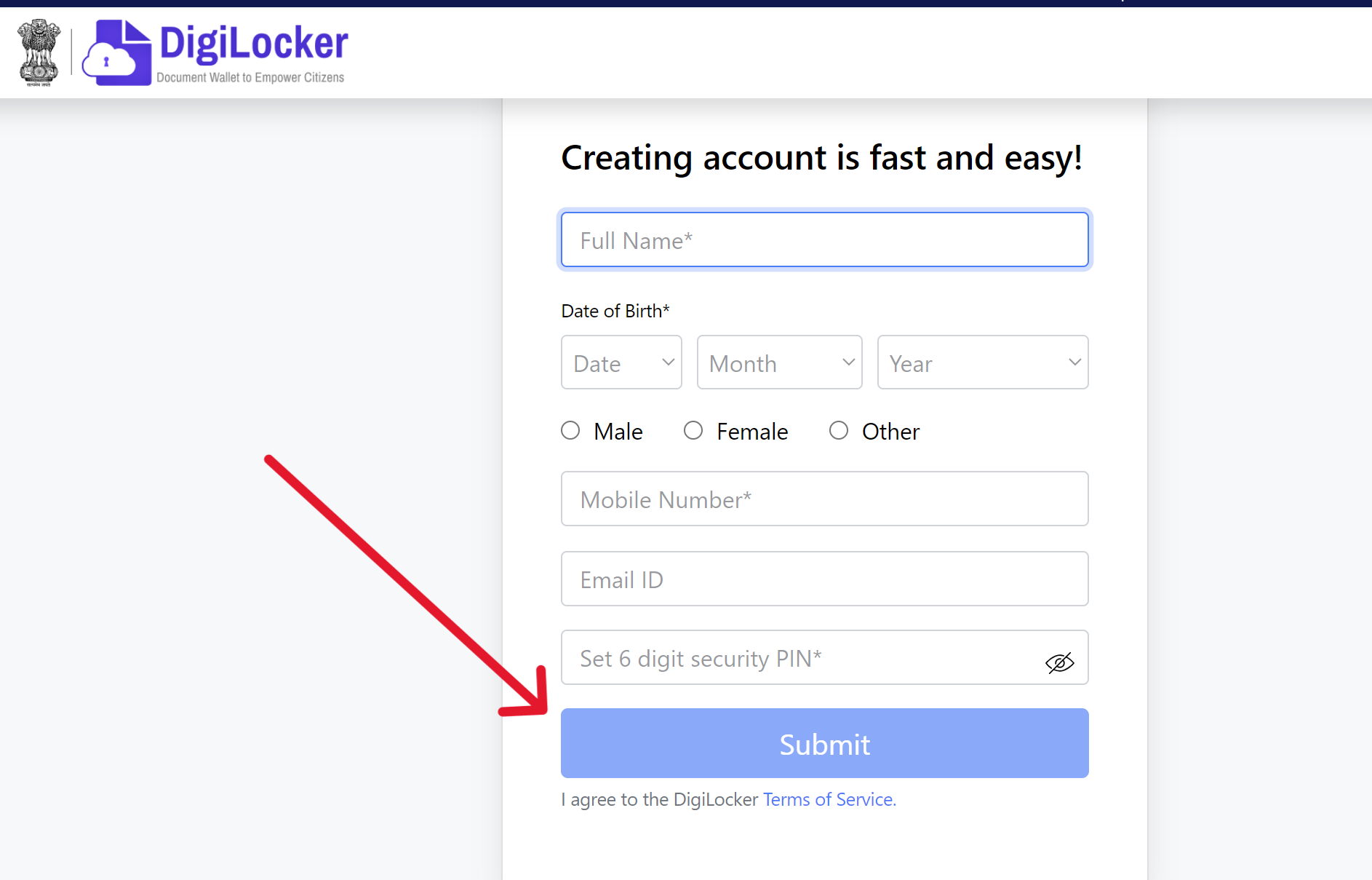
- Once logged in, search for "Ration Card" and pick your state's option.

- Enter your ration card number, district and hit "Get Document."
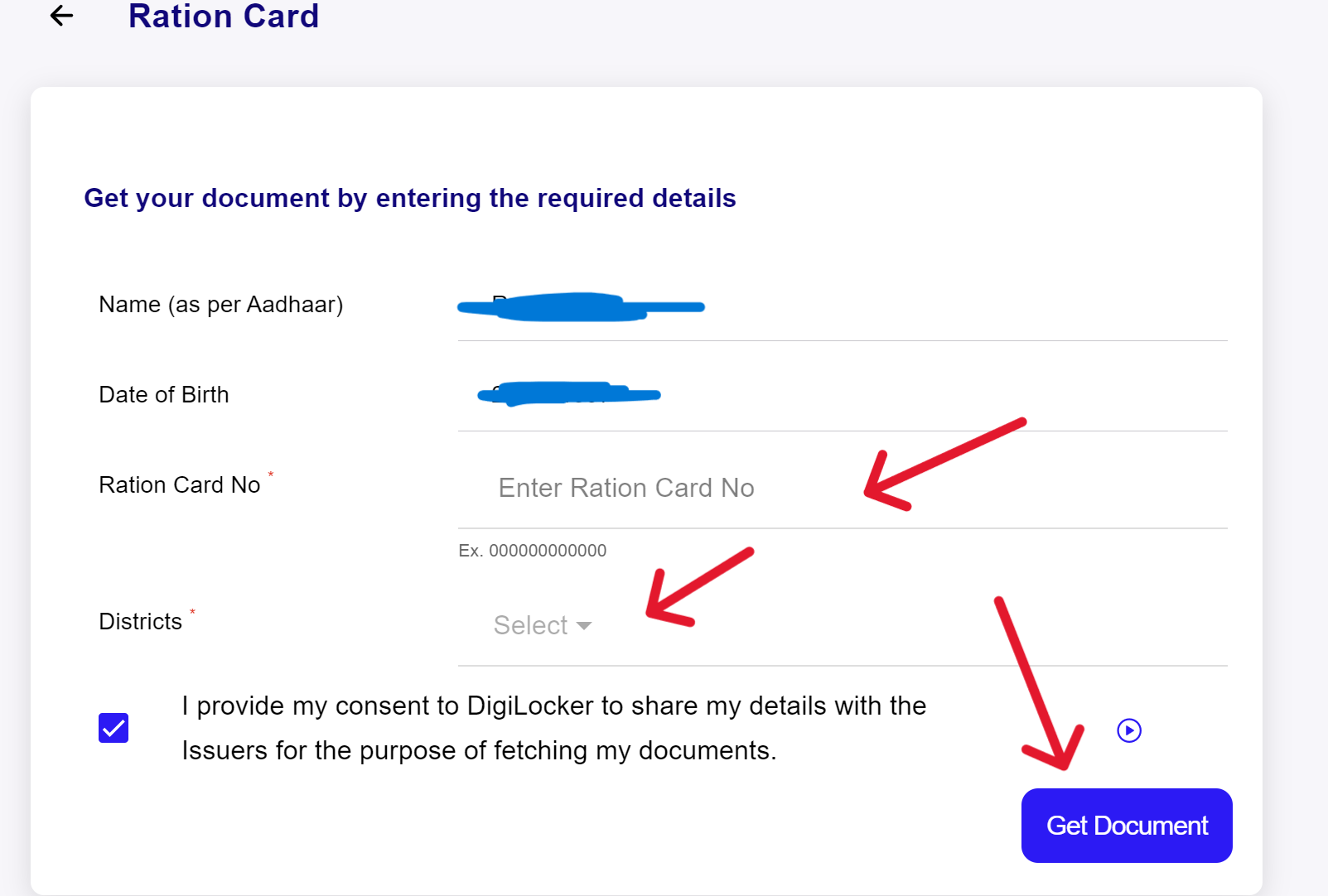
Registration
Registering for a ration card is simple; just follow the steps below.
- Visit the NFSA official portal: nfsa.gov.in/portal.
- Click on "Ration Cards" in the navigation menu.
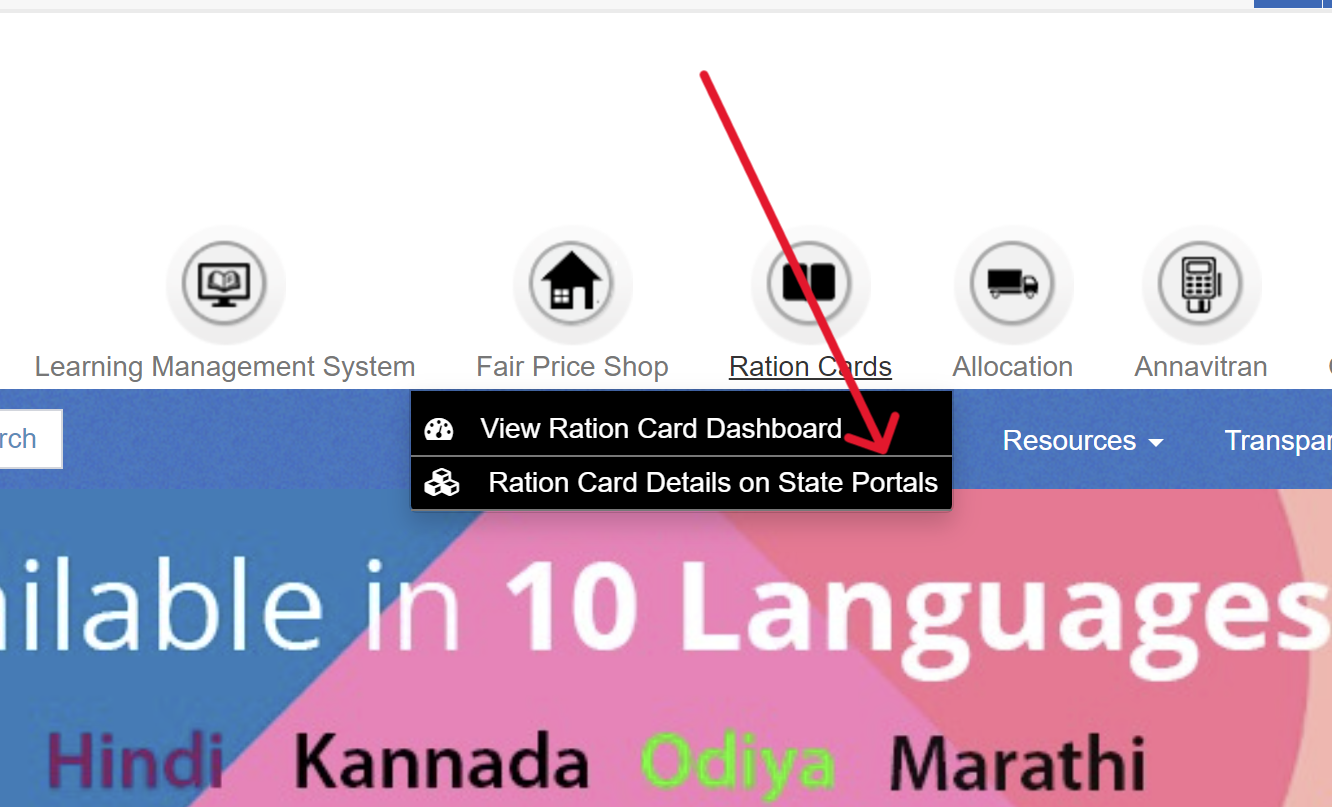
- Select "Ration Card Details on State Portals."
- Choose your state from the list (For example, if I am from Uttar Pradesh, I will select Uttar Pradesh).
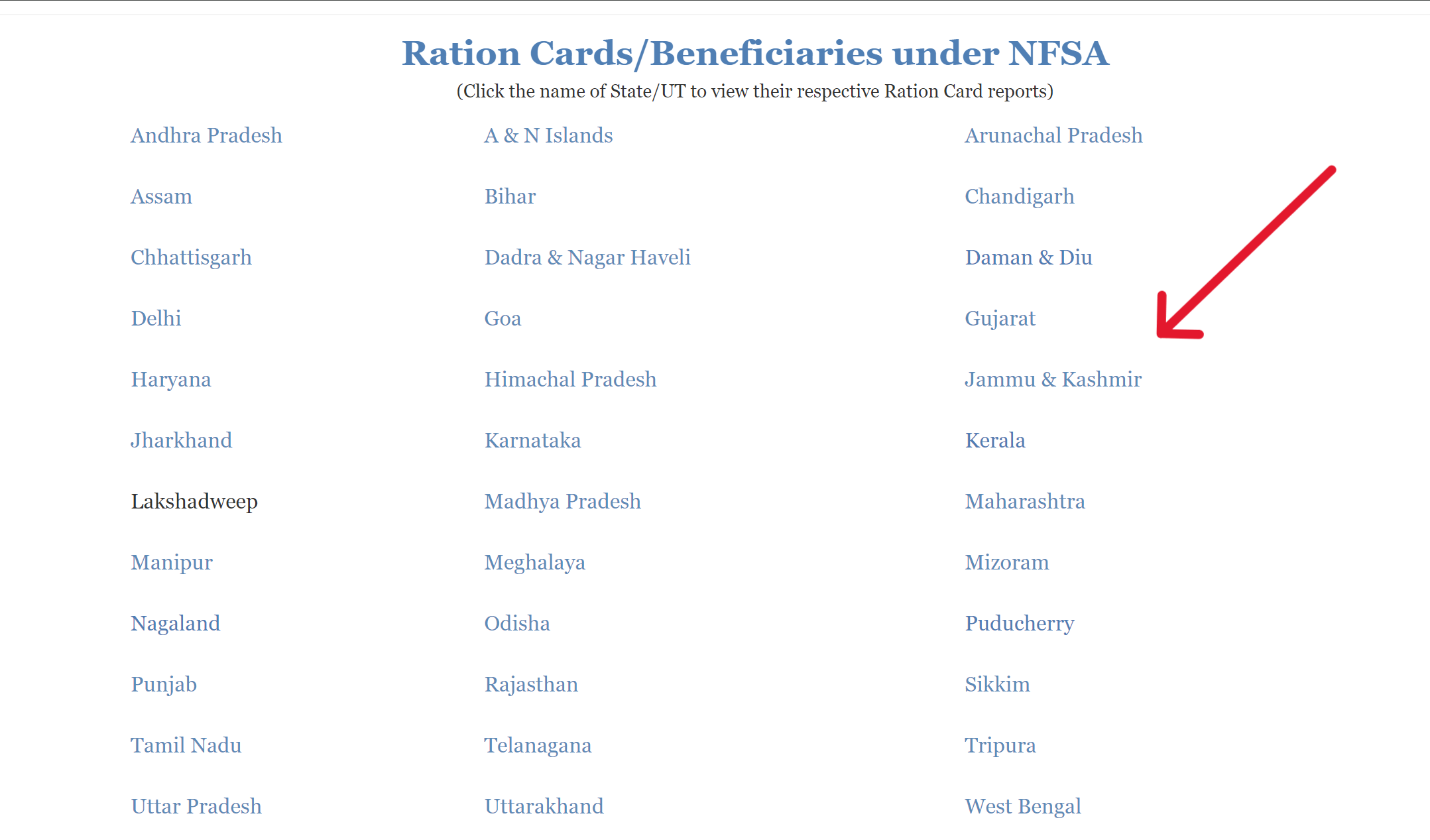
- You'll be redirected to your state's Food and supply Department website.
- Click on "Download Form" in the navigation menu.
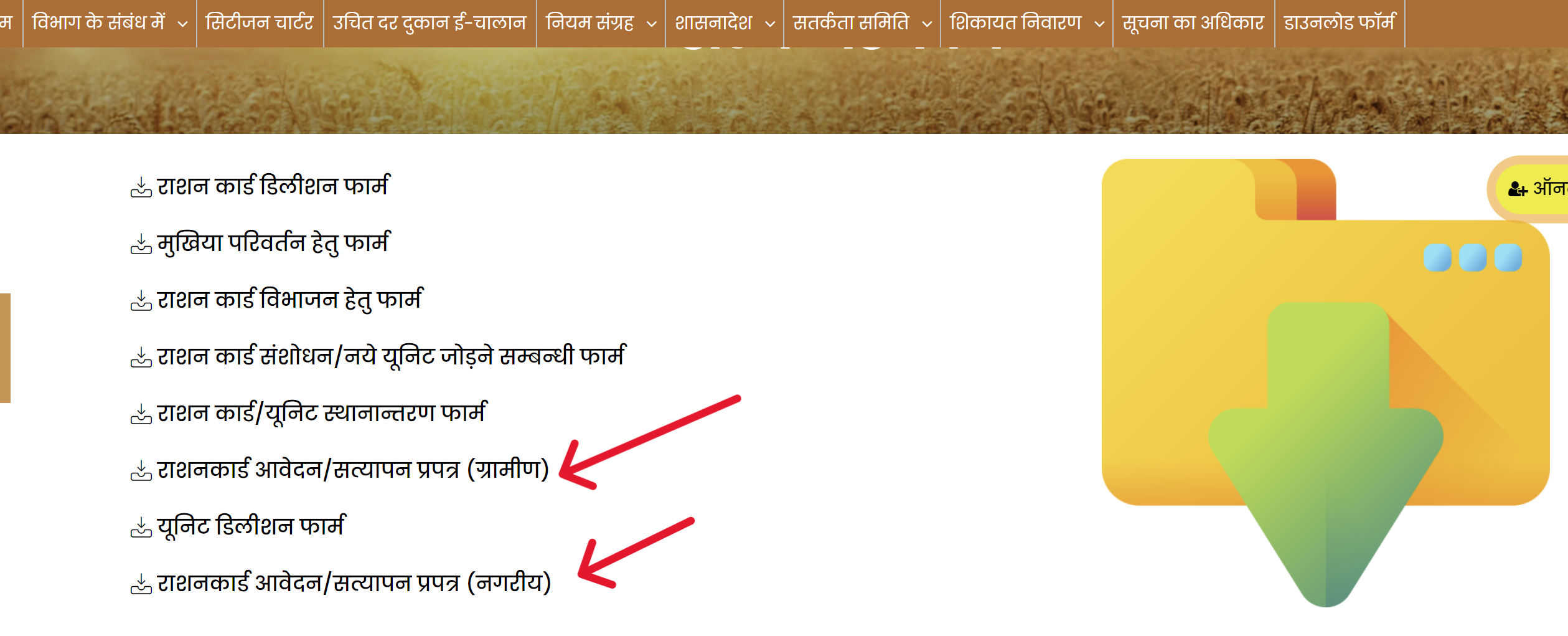
- Select and download the appropriate form, such as "Ration Card Application/Verification Form" for either Rural or Urban areas.
Print and fill out the form, attach necessary documents, and submit to the Food Supply Department. Receive a receipt to track your application. If approved, your name will be on the area's ration card list in 30 days.
Check Status
To check the status of your new or existing ration card, follow these instructions:
- Visit the official website: nfsa.gov.in.
- Now click on "Know Your Ration Card Status" in the Citizen Corner.
- Enter your Ration Card Number and the captcha on the "My RC Details" page.
- Click on "Get RC Details" to see your card status.
What is a Ration Card?
Ration cards are government-issued documents in India used for purchasing subsidized food grains and other essential commodities under the Public Distribution System (PDS).
They also serve as a form of identity and address proof.
Types
Ration cards come in five main types, each for different needs:
- APL (Above Poverty Line): These are for people who live above the poverty line, often middle-class individuals. The amount and price of ration vary by state.
- BPL (Below Poverty Line): These are for people living below the poverty line. They help provide free ration to the country's poorest, especially those without a steady income source.
- AAY (Antyodaya Anna Yojana): Given to those with very low or unstable incomes, like street vendors, unemployed youth, women, and elderly people who struggle financially.
- AY (Annapurna Yojana): Specifically for poor seniors, offering them monthly rations. It targets the elders above 65 who are in need.
- PHH (Priority Household): These aim at the most disadvantaged families, identified through the public distribution system, giving them a priority in ration distribution, with 5 kg of ration per person each month.
Eligibility Criteria
If you're looking to apply for a ration card, here are the eligibility criteria:
- Eligibility: Only Indian citizens are eligible to apply.
- Head of Household: The ration card will be issued in the name of the family's head.
- Age Requirement: The head of the household must be 18 years or older.
- Family Members: All family members' names will be included on the ration card.
- No Multiple Ration Cards: The applicant must not already have a ration card issued in another state.
- Income-Based Issuance: Ration cards are created based on the family's annual income.
Required Documents
Applicants for a ration card must have certain documents, listed below:
- Aadhaar Card (for the head of the household and members)
- PAN Card
- Income Certificate
- Residence Certificate
- Samagra ID (for citizens of Madhya Pradesh only)
- Permanent address, etc.
Link Aadhaar with Ration Card
Linking your Aadhaar card with your ration card is essential to ensure continued access to benefits. The deadline to complete this process is September 30, 2024.
To link, you can visit your state's PDS portal for an online option, or visit the nearest ration shop or PDS office for offline linking.
Common Service Centers (CSCs) can also assist with the process. For any difficulties or further assistance, you can contact the helpline number.
One Nation One Ration Card
The government started a new plan called "One Nation One Ration Card" under the "Integrated Management of Public Distribution System (IM-PDS)" program. Now, people can use their cards to get food grains from any shop in India that is part of this program.
At first, it will start in some states and then expand to more. This new system will make it easier for more than 81 crore people across the country to get their food benefits.
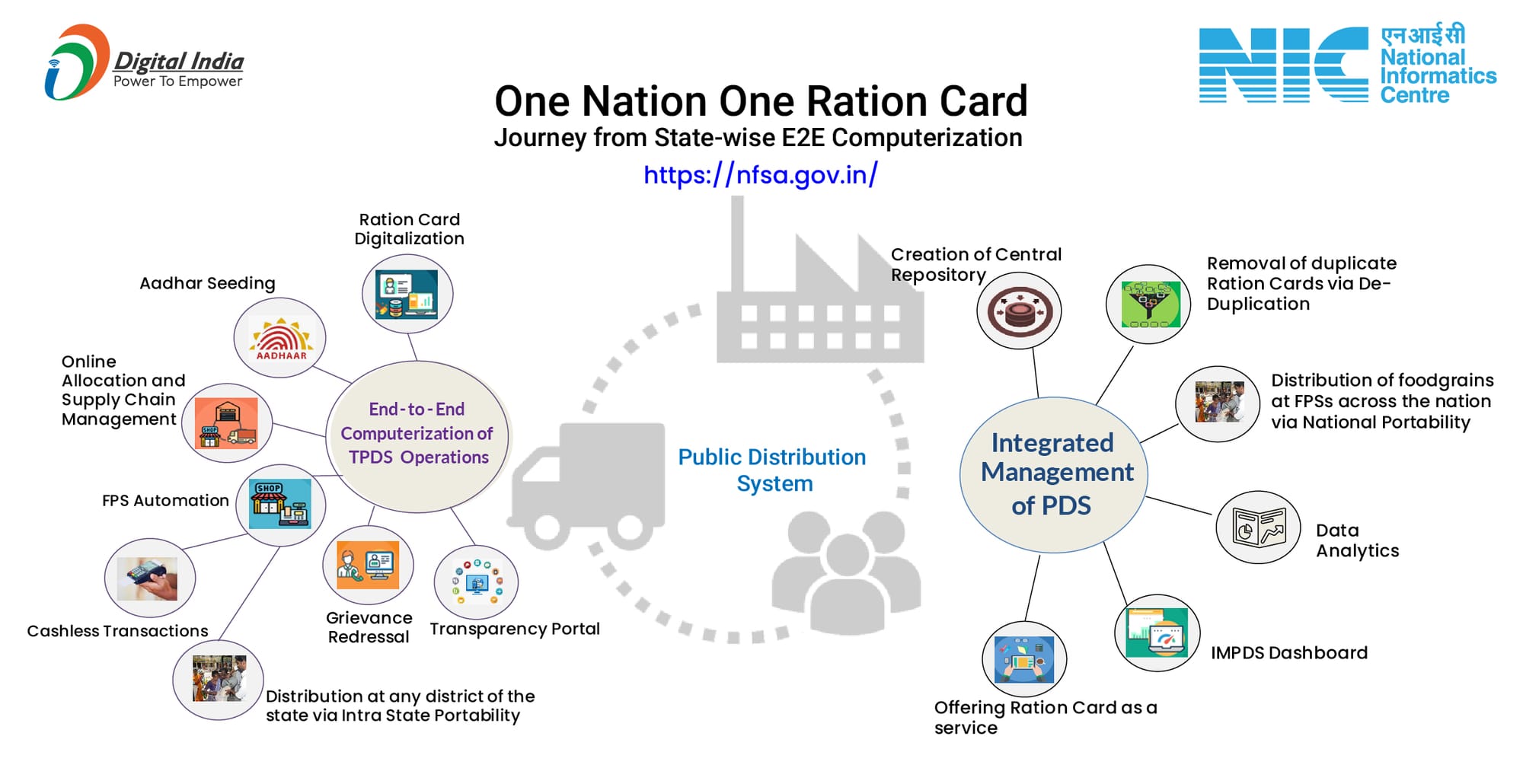
Pradhan Mantri Garib Kalyan Anna Yojana
Under the Pradhan Mantri Garib Kalyan Anna Yojana, 80 crore people in the country get free grains. Every person in a family gets 5 kg of wheat or rice and 1 kg of chickpeas each month. So, if a family has four members, they will receive 20 kg of grains and 4 kg of chickpeas every month.

Helpline Number
For any assistance, please reach out to the helpline below:
| Department | Contact Information |
|---|---|
| Department of Food and Public Distribution | Email: min-food[at]nic[dot]in |
| Phone Nos.: 01123070637, 01123070642 | |
| Websites: Ministry Website, NFSA Dashboard, Annavitran Dashboard | |
| Helpdesk No.: 1967 |